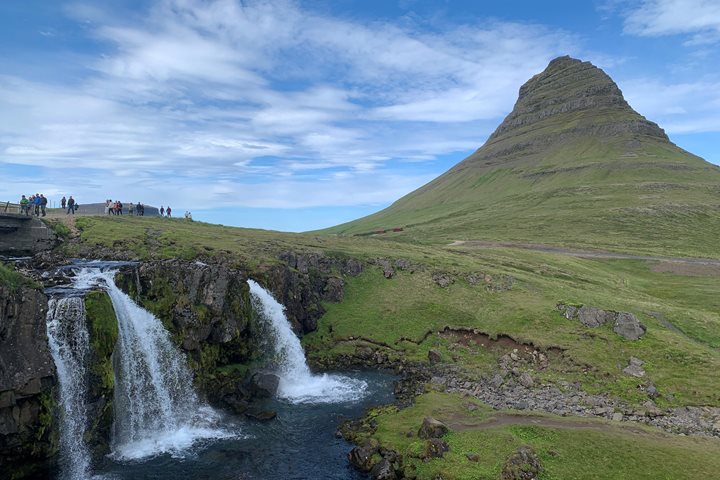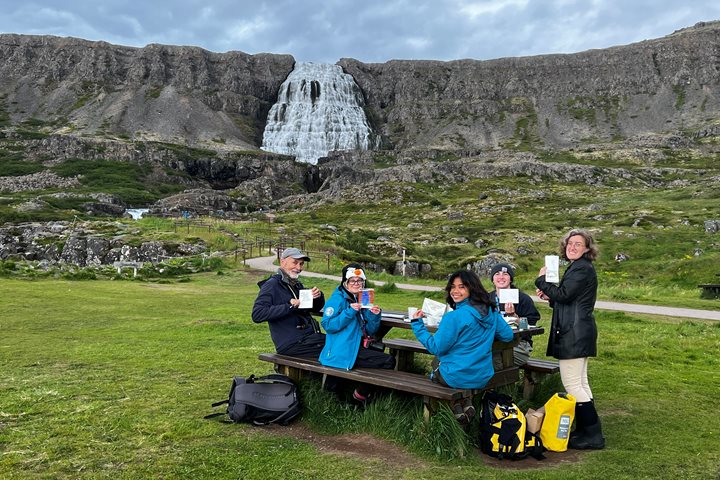It was a rockin’ and rollin’ overnight crossing of the Norwegian Sea, before docking in Lerwick, Shetland at 6:30 a.m. Morning ops began after breakfast, with two groups hiking/busing to the ancient Viking settlements at Old Scatness and Jarlshof, and a third embarking on a walking tour of Lerwick. Fishing is the main occupation in Lerwick and in 2021, 500,000 tons of fish, primarily herring and mackerel, were landed during the 40-day season. Lerwick is also known for fierce winds; at one point not long ago, there were 60 continuous days of a Force 7 gales.
We returned to the ship for lunch, then sailed to Isle of Noss, a National Nature Reserve, where thousands of gannets and hundreds of common guillemots nested amongst the crags and ledges along the cliff. We then sailed to Foula Island, one of the United Kingdom’s most remote permanently inhabited islands with a population of about 35 people. After an early dinner, we landed on the island in a very wet mist, which conveniently stopped a few minutes after arrival. Our guided hike on the moors and low along broken coastal cliffs was filled with wildflowers (including carnivorous flowers), sheep, and nesting fulmars. A few Shetland ponies watched us as we passed. The cool and clean post-mist air, the steady wind, the sounds of wind and the crashing sea below the cliffs, and the soft footing on the moors all combined to make a most pleasurable hike. Our guide stated that the children on the island had only two things to worry about: being blown over by the wind, and falling off a cliff…warnings that adults should heed, as well!
We returned to National Geographic Resolution for a nightcap then capped the night of a most pleasant day.







